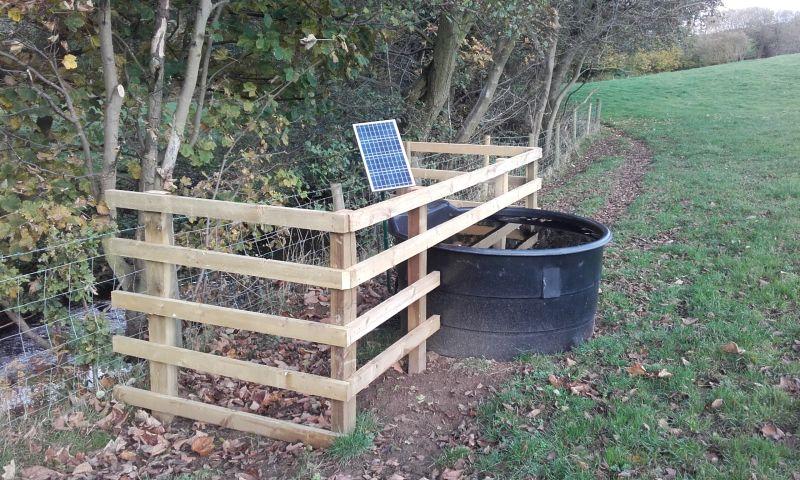
A farming business has installed a solar water pump amid an increasing requirement for farmers to keep livestock away from watercourses.
The European Water Framework Directive has been establishing a framework for the protection of inland waters, transitional waters, coastal waters and ground water.
This is covered in the UK by the Water Environment Regulations 2003 for England and Wales and similar regulations in Scotland and Northern Ireland.
Robert Bull, who runs a dairy and beef enterprise, became interested in installing his own pump after reading the regulations.
His installation kit, from Electric Fencing Direct, came with a water proof control box, battery life monitor, 60w solar panel, submersible pump with 30m of cable and a 30m ½” diameter reinforced hose.
A pump system was set up with 2 x 60 watt solar panels on one 75amp/hr battery.
This ran for two weeks filling a 400 litre trough. The trough was to supply 30 milking suckler cows with 30 twelve-week old calves at foot.
Even in the warm weather this system supplied these cows with no issues.
Robert said the solar water pumps are a fantastic bit of kit that can easily integrate with standard water troughs.
The solar water kit has supplied groups of 90 cattle with all their water requirements without any need to change or charge batteries.
It is a far more cost effective way to supply water than through mains supply.
Findings and capacity
• Water requirements vary greatly for livestock and are influenced by weather, feed, temperature and humidity among other factors. Allowances must be made for these factors.
• Most grazing animals are herd animals and so will drink socially and so the trough size should allow for this.
• Increasing head will reduce output. At 10m head the pump will run at approximately 65 percent of peak output.
• Increasing the distance the pump works will also increase head and therefore reduce pump output.
• Solar recharge times will vary with weather conditions.
• The recommendations below allow for 4 hours recharge time daily and so outputs will vary in summer months and are likely to be higher.
